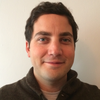Spontaneous applause broke out among the 800-plus congregants when Diana Eck, a scholar of South Asian religions, married her partner, Dorothy Austin, an Episcopalian priest. The two had met 28 years earlier in graduate school and were wed on Independence Day, weeks after gay marriage became legal in their home state of Massachusetts in 2004. “We sang ‘My Country, ‘Tis Of Thee,” Eck recalled. “It was jam-packed.” Their procession went from Harvard Memorial Church, where Austin was associate minister, to Lowell House, a residence for Harvard undergraduates where Eck and Austin have lived and served as Faculty Deans since 1998. The newlyweds celebrated with hundreds of peers and students who Eck considers a kind of unorthodox extended family, one of many she’s had in her life.
While in their 40s, Eck and Austin shared a home for several years with Joan and Erik Erikson, known for their theory of human development, who were then in their 80s. Later, Eck and Austin adopted four adolescent refugees from Kosovo who were brought to the United States by a fellow faculty couple at Harvard. “We have kind of a strange family,” Eck laughed, “with four mothers and four kids.” Through it all, Eck has been researching and traveling widely, forming bonds with families of Hindus, Muslims, and Sikhs.
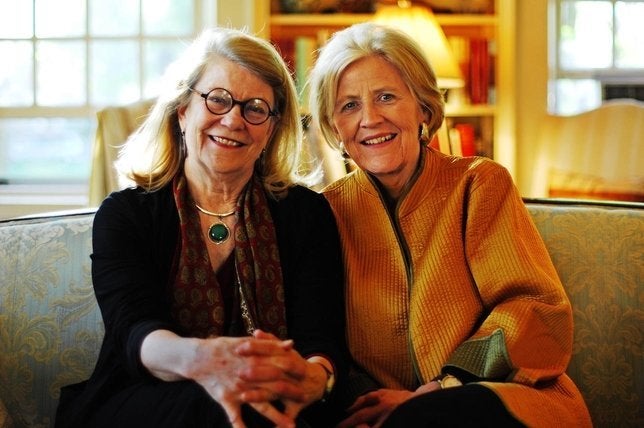
“People are developing these different kinds of family coordinates,” she said. “The people that you gather together around your table at Thanksgiving or Christmas or other big holidays, they are not all people who are in my immediate family. And that is increasingly the case in our world, and something we need to steer into a little bit more as we think about the life course that we have.”
We spoke with Diana Eck for Sophia, a project to collect life lessons from fascinating people. She shared insights from her early days in Montana, her recent visit to the largest religious gathering in recorded history, and much in between.
+ + +
Have you had any recent realizations about living a more fulfilling or satisfying life?
How very important a good marriage is, and how much a marriage goes through its ups and downs and its separations and comings-together.
There are two great things that we need to find in life: one is love, probably the most important, and the second is work, and they compete with one another from time to time. But having been married effectively for 40 years, it is a realization that this is a relationship that grows and matures and is tested through seasons of life. That is the strength of having a trusting and ongoing relationship that draws on our history and moves right on into our present, and I have that kind of marriage.
What advice you would have given yourself earlier in your relationship?
Be prepared for changes. You can never imagine a path that is not without its twists and turns, and there have been many for Dorothy and I. For a while, we lived with Joan and Erik Erikson. They were in their 80s and we were in our 40s. We shared a house together and over the course of 6 or 7 years, we grew together as well.
Eventually Dorothy and I had kids, which I wouldn’t have imagined either. In the 1980s, when I was doing research in India, the opportunity to adopt a baby came up and that seemed like a wonderful thing. But I was in the middle of my research and I couldn’t quite do it then, and by the time I came back and we settled in again, we basically created this joint household with the Ericksons. And that was the end of that, in a sense. We were at the other end of the life cycle, living with folks in their 80s.
But of course there are other twists and turns. When we came to Lowell House as House Masters in 1998, we became the foster parents of a family of four refugee kids from Kosovo. It was another thing I would never ever have imagined ― I wouldn’t probably have known where Kosovo was!
I was out on the west coast and Dorothy called me up and said, “There are these kids from Kosovo who’ve come as refugees and they’re teenagers. They’re all in one family. And they really need a place to stay.”
We were living in a house that actually could accommodate four kids on our third floor of the Master’s Residence here at Lowell House, so Dorothy thought that was a good idea. I immediately said, “No way! I mean, we’ve just moved into a house with 25 tutors and 400 students. We can’t do this.” But she persuaded me it was a good thing. I said, “It’s only for a year, right?” That was in 1999. And it was one of the most wonderful and rewarding things that we have done.

The two boys were younger, the two girls older and more independent. But they all lived here; none of them spoke English all that well when they began. And we still see them all the time. They come for birthdays and holidays; they’re all pursuing careers around the country. To see them grow, and to discover that they’re age-appropriate kids for us and for the couple we know who were involved in bringing them here ― we have kind of a strange family, with four mothers and four kids.
People are developing these different kinds of family coordinates. The people that you gather together around your table at Thanksgiving or Christmas or other big holidays, they are not all people who are in my immediate family. And that is increasingly the case in our world, and something we need to steer into a little bit more as we think about the life course that we have.
How has your study of religious communities influenced the way you live your day-to-day life?
Probably in just about every way. My research work began as a student when I first went to India and spent a year there with 10 other students. It was a different era, a different time.
I was a young woman who had grown up in the mountains of Montana as a Protestant Methodist in a pretty good social gospel tradition. I became fascinated with the religious lives of others who seemed also to be very religious, yet in ways that were quite different from my own. That fascination led to relationships, in India and elsewhere, with families of Hindus, of Muslims, of Sikhs, and a lot of study.
“There are two great things that we need to find in life: one is love, probably the most important, and the second is work, and they compete with one another from time to time.”
- Diana Eck
My whole worldview has changed because of the work that I do. Specifically, the way in which I appropriate my own faith as a Christian, and the way in which I think about the faith and life of others who are very different than myself. That mutuality of regard is how we deal with difference and diversity in the world. It is my professional work; it is also part of my worldview. Some of my best friends are Hindu or Buddhist or Sikh, my students as well. This is the sea in which I swim.
My first intellectual challenge was to try to understand this incredible city of Banaras (also called Varanasi) in India and its meaning for Hindus. That was the place I lived for the first year I was in India and I’ve been back many times. It’s a kind of home to me.
It is a city that for many people really confronts the issues of religious difference in ways that are deeply affecting. It’s a city where Hindus come to live out their lives and die; a city where people come to bring the ashes of their beloved dead to commit them to the Ganges. Dealing with how to understand and articulate the meaning of that city for Hindus was really the subject of my first work, the book that was published as “Banaras: City of Light.” When it came out, it was appreciated in India by scholars and teachers in Banaras, and they very often said they could not really believe that this book had been written by someone who was not a Hindu.
And no, I’m not a Hindu in that sense. But I’ve tried to understand the faith of people for whom this is a very vivid and important place, and I think that really is the great challenge of the humanities today. How do you deeply understand people who are not just like you? We tend to gravitate towards our tribes; the challenge is to understand the people of other tribes.
After that I became involved with a major commission of the World Council of Churches on the relationship of Christians to people of other faiths. I went back and forth to Geneva and to other parts of the world thinking about that question for people who lived as Christians in India or Thailand or Malaysia or Britain. Gradually, out of that decade of dialogue, I wrote another book that is called “Encountering God: A Spiritual Journey from Bozeman to Banaras.”
It is a book that addresses a theological question: How does someone of a Christian background think theologically about the diversity of faiths? And I’m helped to do that by Hindus and Buddhists and Muslims. It is a theology but with people in it, the people I’ve met. It is a book not about what Banaras means to Hindus, but what Banaras and everything it represents means to me as an intelligent, intellectual person whose primary family of faith is in the Christian tradition.
Those are big challenges in our age, not just how we live as co-citizens in societies with people of different faiths and different cultures ― I mean, that’s a big challenge itself ― but how we think about all that as Christians, or as Jews, or as Muslims, or as Hindus. How do we think about the religious other? There’s a theological dimension as well as a civic dimension to our pluralism.
News coverage about religion in the U.S. is typically tied to a controversy or conflict. Are there respects in which the U.S. compares favorably to other countries in terms of religious pluralism?
The Immigration and Nationality Act of 1965 really began to change the “We” of “We the people of the United States of America.” People came as immigrants from all over the world, and Hindu and Muslim and Buddhist and Sikh communities became part of the landscape of the U.S.
Studying that changing religious landscape is what the Pluralism Project is about. That started 25 years ago and has been an ongoing project ever since, to both study the changing religious landscape in cities and towns, and also to interpret how it’s gone, what it’s meant, what are the things that have been problems, what are the things that have been ill-developments in inter-religious understanding.
You’re right that most of what people see in the news are places where things have not going so well. There’s some sort of incident at a local Islamic center, for example, where maybe there’s been graffiti or a firebomb, or maybe it’s been burned down, or maybe the Sikh gurdwara is having a hard time. There are many of those sorts of incidents.
But the genesis of the Pluralism Project was to begin to document the ways in which people were actually reaching out for each other and coming together. To take within our study the interfaith initiatives, the Abrahamic initiatives, the amazing things that begin to happen when a Methodist church and a mosque buy property together in Fremont, California and start building side-by-side. The things that emerge from interfaith initiatives in cities and towns across America.
To study that, you really have to go local because a lot of these things don’t make the national news. When we started doing this, looking at local newspapers across the country to see what was happening in cities and towns, we found so many interfaith initiatives, interfaith projects, interfaith councils, the whole range of things.
It really is an interfaith movement toward greater relationships with people who are different than ourselves, in cities across the U.S. It has developed much more widely in the U.S. than any other place, certainly in Western Europe ― more than any place in the world.
“When immigrants come, the freedom to practice their faith is a guarantee. They may have trouble with their neighbors, but freedom of religion is part of the blueprint for America, and that is the recipe for the religious diversity that we have today.”
- Diana Eck
So in some respects, you’ve found that the United States has succeeded in fostering religious pluralism more than other Western countries?
People get tired of talking about American exceptionalism, but I think this is an extraordinary thing about the United States, that we are a nation of immigrants, first of all, that is built upon a pluralistic society of native people that were here to begin with. The issue of diversity is really with us from the beginning.
At first it was the Protestants immigrating, then Protestants, Catholics and Jews ― and there’s always been resistance. The issue of “who we are” has been an ongoing one. It’s part of the ongoing identity crisis of America. And over the last 50 years largely, so many other communities have grown ― Hindu, Buddhist, Sikh, Jain communities.
We are built on a structure of the freedom of religion and the non-establishment of religion. That really is a pretty sturdy rudder for the U.S. When immigrants come, the freedom to practice their faith is a guarantee. They may have trouble with their neighbors, but freedom of religion is part of the blueprint for America, and that is the recipe for the religious diversity that we have today. By the way, people are also free to say, “I don’t want to have anything to do with religion.”
These are not uncontested issues, of course. There’s still plenty of people who have this deep conviction that this is a Christian country and ought to say so in its Constitution, etc. But that’s not the legal basis on which we’re framed. So the flourishing of religion, of religious diversity, is really built into who we are.
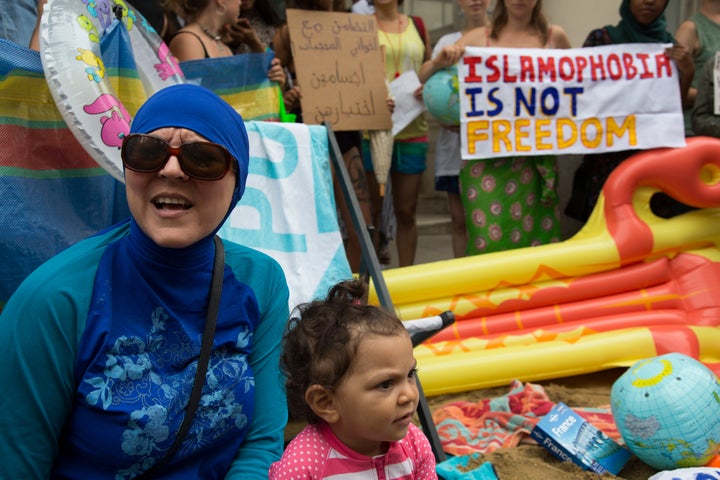
These are different kinds of questions that Germany faces or France faces or Sweden, even the U.K., where they have had a state church or an established church. Sweden has given it up, and France has become rigidly secular in ways that really lead France to have to talk more about religion in the public sphere than we do. They have whole commissions to try to figure out what to do about people wearing the headscarf. The idea that the United States government would have to figure out what to do about the headscarf is simply ludicrous. We don’t get involved in that.
So I do think that the U.S. has an opportunity as a democracy to really exemplify what a religiously diverse society can be when it embraces the pluralism. Pluralism isn’t just diversity; it’s something we create out of this diversity.
Facebook’s Mark Zuckerberg revealed last year that he’d traveled to a temple in India at the urging of Apple’s Steve Jobs, who had gone earlier in his life. Based on your experiences in India, can you put these sorts of trips in context?
India is a culture in which religious life and spirituality is very much on the surface of things. That doesn’t mean it doesn’t have depth, but it is very visible. There are lots of temples, lots of Islamic centers, lots of gurdwaras, and lots of teachers. The idea of going on a spiritual journey is really part of the DNA of India itself.
I just published a book called “India: A Sacred Geography.” The journey to sacred places is the most common way that people travel in India. They are always going on pilgrimages to sacred places. They are always undertaking spiritual journeys to visit the great shrines in the Himalayan tier of pilgrimage places; these places are called tirthas, a word that means “crossing place,” a place where you can cross the river to the far shore but also cross over into another dimension of life. Cross over to heaven, in one sense it’s used.
This kind of spiritual journey is very common for Hindus and Muslims. They go to the sacred shrines, they go to the headwaters of rivers. If you went to the headwaters of most rivers of the United States, you’d have a wonderful naturalistic hike or trek, but you wouldn’t find a shrine there. At the headwaters of the rivers of India, they are pilgrimage places.
Both Zuckerberg and Jobs went to Kainchi Dham in Nainital. Do you know it?
Neem Karoli Baba was the teacher of Ram Das, maybe that was the reason. There are lots of places like that. India is simply dotted with pilgrimage places of this sort, and with teachers and very powerful spiritual guides.
The practice of leaving settled society to undertake a spiritual journey, or a spiritual life really, is something that is much more common in India. Common especially to a certain phase of life, to the end of life. But not so unusual for younger people as well.
“Places where one can experience some of that separation from the world of the familiar, to defamiliarize ourselves with what we take for granted and enter into the ebb and flow of another culture, it certainly is one of the more valuable things that we do as human beings.”
- Diana Eck
I went with a research team to the Kumbh Mela, the huge pilgrimage at the confluence of the Ganges and Yamuna Rivers. There are 12 million people there on your average major bathing day, and it’s just an extraordinary thing. One of the things that I was fascinated by was these spiritual seekers, the sanyasi, the ones who have cast off from the shores, so to speak ― cast off their family connections and committed themselves to a life of asceticism. The orders of ascetics encamp there, there were 200,000 of them in one place. So people come to the Kumbh Mela not only to bathe in the rivers but to have the darshan, the “sacred sight,” of these ascetics, who have gained a certain spiritual power simply by what they have given up. That’s worth doing, and worth coming in contact with.
That Zuckerberg and Jobs went there is really fascinating. Nainital is in the foothills of the Himalayas; it does take one quite out of the world that we’re familiar with. Those are the kinds of journeys that we need to assess who we are and to think more clearly about the rest of the world as well. I spent many, many happy months ― I’d have a base in New Delhi and then pack a bag and go into the mountains to places in that Nainital region and further up into the high shrines in the Himalayas, and all the way down to the tip of southern India.
By that time I felt more comfortable in India, but I will say that the power of being a stranger in someone else’s religious community has its own lessons, really. It is something like the power of visiting another very happy extended family and being at their table.
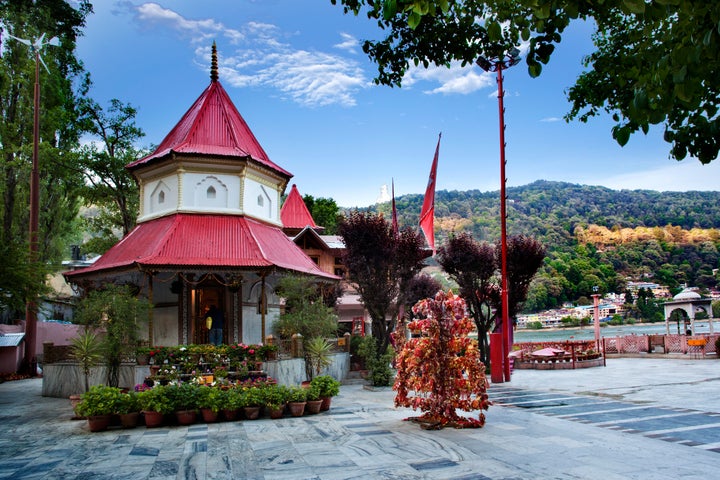
When I first went to India with the small group of people that I traveled with, it was with the University of Wisconsin’s year-in-India program. Nobody else had a year-in-India program, that was in 1965. There were very few other foreign students or even Peace Corps people because it was during the Indo-Pakistan War. This was Baranas before the Beatles, so to speak. There weren’t even hippies. It was a long time ago. This was a time when you could write an air letter, post it from India, and it would get home in maybe 10 days or two weeks. It provided a kind of encounter that is really rare.
Places where one can experience some of that separation from the world of the familiar, to defamiliarize ourselves with what we take for granted and enter into the ebb and flow of another culture, it certainly is one of the more valuable things that we do as human beings.
Is there a particularly notable travel experience, either in India or elsewhere, that you would recommend to others?
Some of my best were experiences traveling into the Himalayas, by myself or with a couple of companions who were also academics, going by bus and by foot into the mountains and some of these high shrines. My favorite is Kedarnath in the high Himalayas, it’s one of the 12 most important shrines of Shiva. I think it was one of the most profoundly beautiful days that I’ve spent, being there.
Then I love the trip that we took a few years ago. Dorothy and I were with about 10 students to Banaras for almost a week, then to the Kumbh Mela in Allahabad, and that was exciting in many ways. In the first place, I studied pilgrimage but had never been to the Kumbh Mela, and it is the greatest of all Indian pilgrimages. It is the most intense.
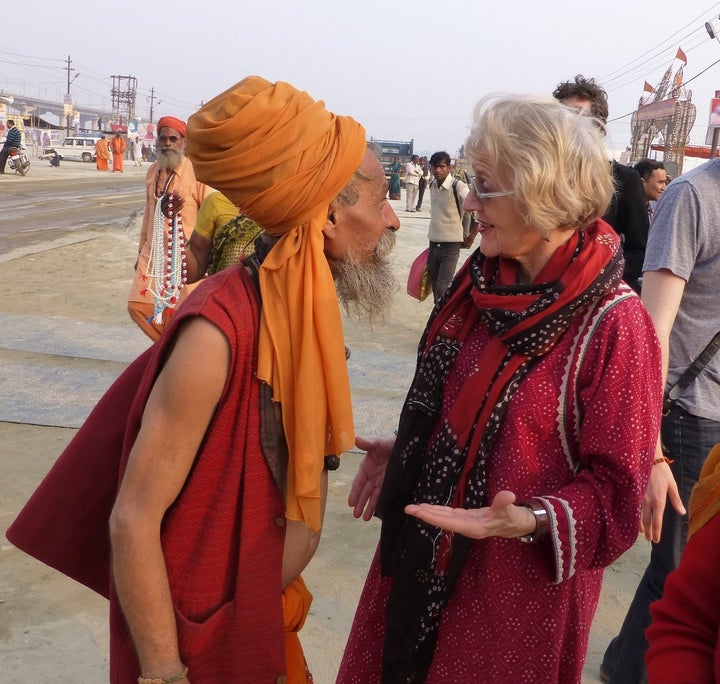
We have a Harvard project on it called “Mapping the Ephemeral Megacity.” I was doing this research with colleagues from the graduate school of design, Rahul Mehrotra, and with people from the business school, from engineering, from public health, all of whom were studying how a culture manages to achieve setting up a city, a tent city, for five to seven million people at a time, over the course of 55 days, that has plumbing and electricity. All of these questions I never really ask about pilgrimage.
It was wonderful. I was very interested in the huge congregations of ascetics who were there. Other people were interested in the sheer construction of a city this size on the floodplain of the river with basically five things ― rope, corrugated metal, bamboo poles, canvass, and nails. It was amazing. It was a research trip, yes, but it was a journey that was just fabulous.
For anyone else, I would say: there are four Kumbh Melas in India; the one in Allahabad every 12 years is the biggest and most famous, but among four places they rotate this massive pilgrimage. All of them are larger than the Hajj to Mecca and require a coordinated effort that combines government and private enterprise in just remarkable ways. It was great being there.
You grew up in a fairly small town in Montana. Did that experience provide anything unique to you as you were coming of age?
Absolutely it did. I grew up going around with family, camping and living in a very beautiful mountain valley, knowing the names of the mountains and the rivers. I think it’s no accident that I ended up studying the geography of India and knowing the names of the mountains and the rivers and all of that. I loved it. I think it gives a sense of space and a can-do-ness that was very powerful.
I always imagined I would live in the country or in Montana. But now I can’t imagine not living in the city. I love an urban environment. I do like a balance and I go home to Bozeman a couple of times a year. There’s another little spot I love in the small town of Ovando in the Blackfoot Valley. I draw nourishment from Montana and I consider it home in a very different way than Cambridge is home or Banaras is home. All of them resonate in a very powerful way.
I guess one of the things that is an advantage of the world in which we live is that I can at least I can have multiple homes. I can have that attachment to Montana and to Cambridge and to India.
“The U.S. has an opportunity as a democracy to really exemplify what a religiously diverse society can be when it embraces the pluralism. Pluralism isn’t just diversity; it’s something we create out of this diversity.”
- Diana Eck
Is there anything you wish you had done earlier in life, or later in life, than you did?
Not really. One of the things that is very wonderful about the phase of life that we’re in now is that we live in an intergenerational community. Dorothy and I have always liked the idea of living in community. That is one of the reasons that we made the rather unusual decision to move into a joint household with people who were a good bit older than we.
Now, in this phase of our life when we’re a good bit older, we live with about 400 people who are between 19 and 22 years old, and I love that. I like the energy of it. I love getting a sense of the intellectual interests of students. We both go into the Lowell House dining hall and any place you sit and strike up a conversation with a student, it’s likely to be really interesting, and about things that we probably don’t know anything about.
We recently took 20 of our students out to the Harvard Forest, which is a forest that Harvard runs for experiments out in central Massachusetts. We stayed overnight and walked in the woods and talked. The kind of intergenerational life that is possible in the city, and in universities, is really precious. At Lowell House, there are three babies in the house at the moment, the children of our tutors. So we range from 3 to 83. This too is a community that spans the life cycle.
